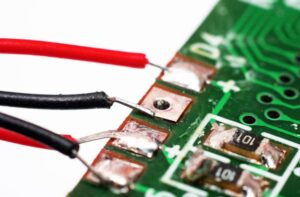Electronics Cable and Harness Manufacturing Assembly Guide
2023-01-03The demand for wire harnesses continues to grow, and details matter when it comes to making custom electronic cable and wire harness assemblies. Here's everything you need to know about cable assemblies and harnesses.
What are electronics cable and harness assemblies?
Harnesses
Simply put, a harness assembly is a processed bundle of wires with a protective sleeve.
Harnesses are used for internal work, such as personal computers or small electronics. Because of their use in small electronics or internal systems, harnesses are not as durable as cable assemblies.
Advantages of harness assemblies
- Optimization of space
- Customized flexibility
- Improved equipment safety
- Increased life of custom cable assemblies and wires
Cable assemblies
In our daily lives, you may have noticed some electrical control panels with fuses and outlets and a whole string of wires and cables connecting from different assemblies to that central hub. All of these wires and cables are designed to carry electricity and certain signals, and the whole system together is called a cable assembly.
Cable assemblies use a heavier housing because the assembly is used in harsher environments. The housing of a cable assembly can withstand
- Wear and tear
- Extreme temperatures
- Moisture
- Compression and expansion
Cable and harness design
The first and most important step in any electrical manufacturing process is pre-planned design. This also applies to developing cable and harness assemblies.
Depending on the application, engineers will take numerous measurements to see how much wire is needed.
Electronics Prototyping
Prototyping is a common practice in the electronics manufacturing industry. Creating a test version of the final product is critical to resolving any issues that were not addressed during the design phase.
In addition, prototyping gives engineers the opportunity to experience the real thing first hand, which helps them come up with more efficient layouts or refine blueprints.
Harness Production and Assembly
In a broad sense, the steps involved in building a wire harness include
- Batch cutting the wire to the proper length with a cutter
- Stripping wire ends and connecting terminals or connectors
- Gathering the wires into a harness that meets the design specifications
- Sealing the wire ends
Harness testing
Each wire harness undergoes a safety testing process to ensure the product performs to its potential.
How do you customize your cable and harness?
The important thing to remember is that the more detailed information you provide to the PCB manufacturer, the fewer problems you may face.
- Detailed images of connectors and pin locations
- Wire list
- List of materials
- Assembly drawings
- Test specifications
Contact KingPCB as your partner
Now that you understand the process behind manufacturing custom cable and harness assemblies.
We are equipped with state-of-the-art equipment and skilled personnel to provide harness assemblies to meet your custom requirements. KingPCB can be your trusted PCB manufacturer.
Contact us now to view our manufacturing capabilities guide and learn more about what we can do for you!




